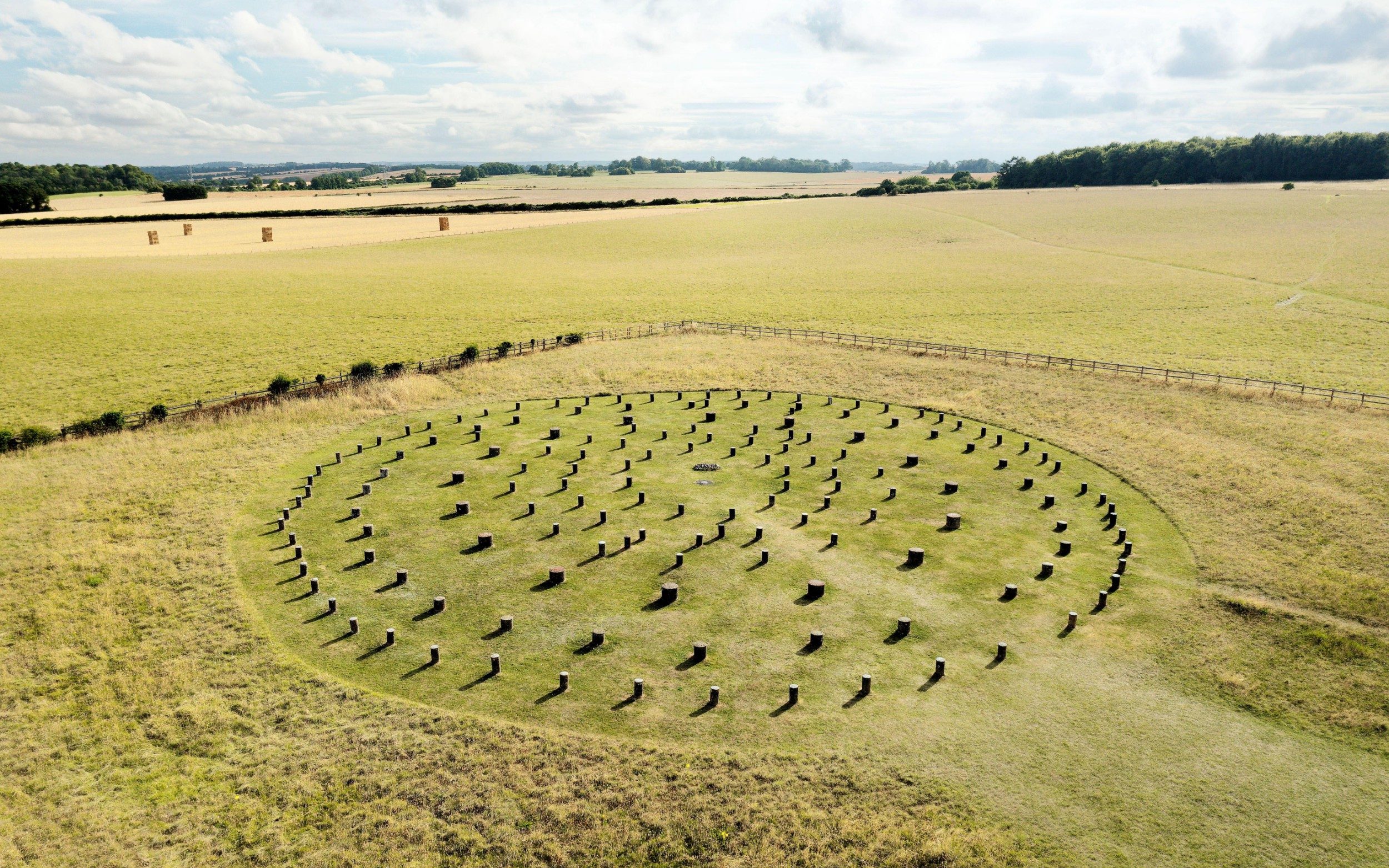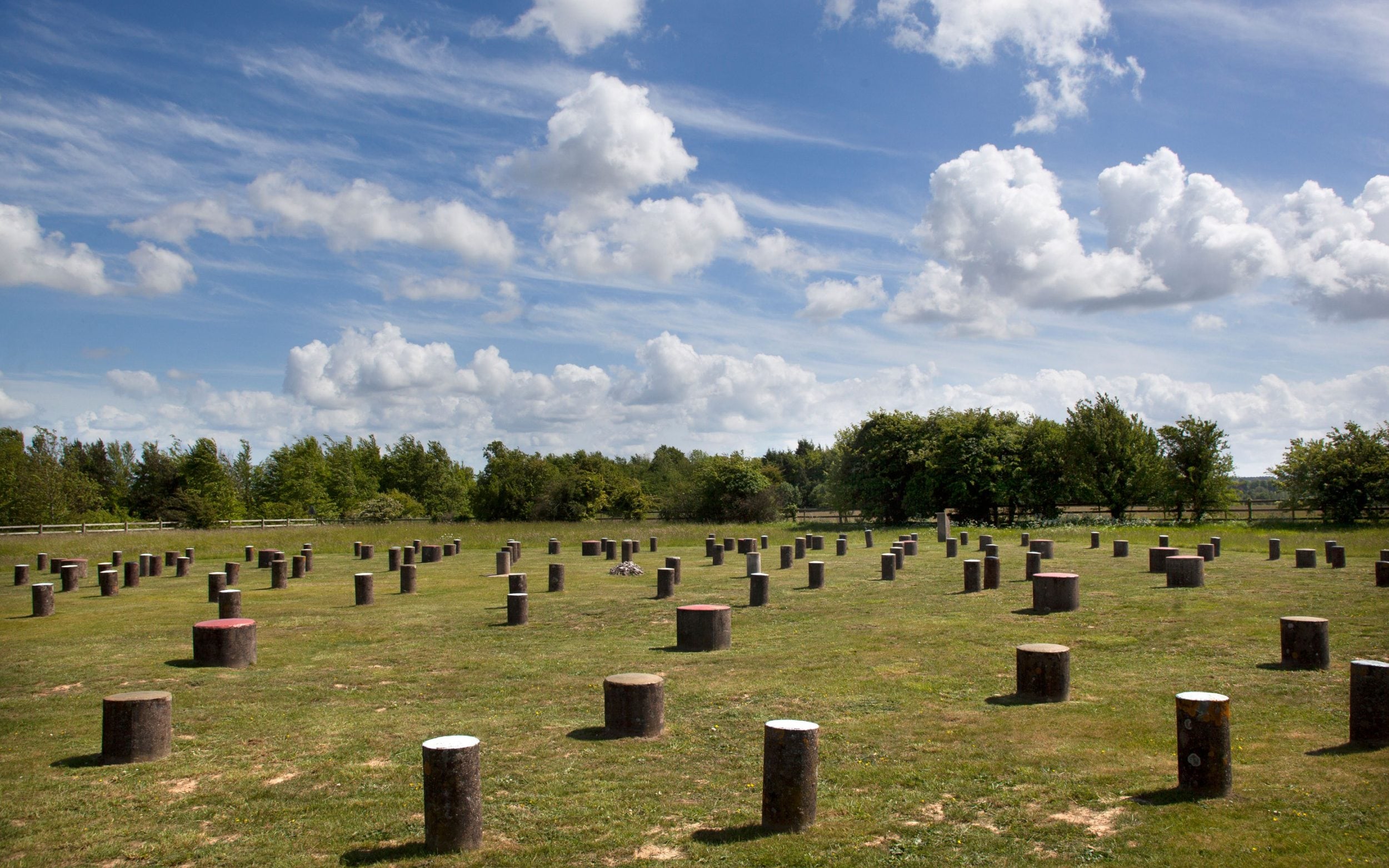
New research has revealed that the ancient monuments Woodhenge and Stonehenge are contemporary with one another, not built hundreds of years apart as previously thought, and that Woodhenge was built in at least two phases.
erected at nearby Stonehenge.
Now, radiocarbon dating of Woodhenge’s concentric ovals of standing posts, surrounded by a bank and ditch, has found that the solstice-aligned timber rings are earlier than assumed and the monument was constructed over a longer period than previously realised.
It now seems the timber rings were erected in the decades around 2600 BC and the surrounding earthworks were made about 150 to 200 years later, circa 2450 BC.
The timber rings are therefore broadly contemporary to Stonehenge, which was erected in the decades around 2500 BC, or slightly earlier.
the Stonehenge and Avebury World Heritage Site.
She told The Telegraph: “We’ve dated different parts of Woodhenge and some bits are clearly later than others, showing that the monument wasn’t all built at the same time.

contemporary with the sarsens at Stonehenge.
“So it’s pushed Woodhenge back to a similar period. This shows that actually it’s a much more complicated picture.”
Noting that both monuments were aligned with the solstices, she said of the Woodhenge discovery: “It’s significant because it proves that Stonehenge was not a one-off within the landscape.
“It shows that people who held their ceremonies or religious rituals in these monuments were looking at the sun in a similar way [at the same time].”
Discovered from the air
Woodhenge was discovered in 1925 after RAF Squadron Leader Gilbert Insall noticed strange formations in a ploughed field while flying near the Wiltshire village of Durrington.
The monument consisted of six concentric rings of timber posts of varying sizes, forming an oval 40 metres (131 feet) long and 36m (118ft) wide. English Heritage notes: “The outermost two rings consisted of relatively small and closely spaced posts.
“Moving inwards was the ring with the largest posts, comprising 16 posts measuring about 35cm (14in) in diameter… Within this ring were three smaller ovals of posts.”
– its oval post rings are aligned northeast to southwest, linked to either the midsummer sunrise or midwinter sunset.
Dr Chadburn recently retired from Historic England, where she was senior policy adviser. For 20 years, at English Heritage, she oversaw Stonehenge as the lead archaeologist.
She conducted the latest research with Clive Ruggles, emeritus professor of archaeoastronomy in the School of Archaeology and Ancient History at Leicester University.
Their findings will feature in their forthcoming book, Stonehenge: Sighting the Sun, to be published on May 8 by Liverpool University Press on behalf of Historic England, which funded and oversaw the radiocarbon dating.
They write: “These new results mean that we can now say with some certainty that the timber sun-sighting monument at Woodhenge was earlier than its surrounding henge, which had no solstitial alignments…
“Once the timber rings started to decay, it seems reasonable to assume that this sun-sighting timber monument fell out of use.”
Their new research also challenges common misconceptions about the monuments and explores archaeoastronomy, the study of how ancient peoples understood phenomena in the sky and what role the sky played in their cultures.
Dr Chadburn said: “Clive and I wanted almost to set the record straight. There’s quite a lot out there which is fringe or inaccurate. Archaeoastronomy is not something that is well understood by archaeologists – and astronomers don’t often understand the archaeology.”
In their book, the academics write: “Some of the most common misconceptions about Stonehenge concern its connections with the heavens… As a result, a bewildering collection of contradictory accounts about Stonehenge and its ‘astronomy’ are available in bookshops and online.”
Dr Chadburn said: “People have said it was used to predict eclipses or it was aligned on the equinox. People claim all kinds of astronomical alignments for Stonehenge, but when you examine them very critically, the evidence doesn’t back that up.”
Play The Telegraph’s brilliant range of Puzzles - and feel brighter every day. Train your brain and boost your mood with PlusWord, the Mini Crossword, the fearsome Killer Sudoku and even the classic Cryptic Crossword.


Post a Comment
0Comments